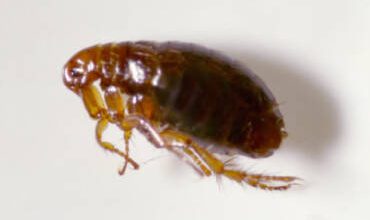Introduction To Pest Control
Pest control is an essential aspect of maintaining a healthy, safe, and clean living or working environment. Whether it’s a home, office, or industrial site, the presence of pests can pose significant threats to health, hygiene, and property. Among these pests, bed bugs are particularly troublesome, requiring specialized approaches like bed bug treatment to effectively manage them. This article delves into various aspects of pest control, focusing on the best practices, methods, and the importance of dealing with specific pests like bed bugs.
Understanding Pest Control
Pest control refers to the management or regulation of species classified as pests, typically because they are detrimental to human health, agriculture, or structures. Common pests include insects (ants, cockroaches, mosquitoes, bed bugs), rodents (rats, mice), and even birds in some cases.
Importance of Pest Control
- Health Risks: Many pests are carriers of diseases. For instance:
- Mosquitoes can transmit malaria and dengue.
- Rodents can carry hantavirus and leptospirosis.
- Bed bugs, while not known for spreading diseases, cause severe skin irritation and allergies.
- Property Damage: Termites and rodents are infamous for causing structural damage, gnawing through wood and wiring.
- Food Safety: Pests in food storage areas can contaminate food supplies, leading to waste and health risks.
- Psychological Well-being: The presence of pests can lead to anxiety, stress, and sleeplessness, especially in cases of bed bug infestations.
Common Pests and Control Methods
1. Bed Bugs
- Overview: Bed bugs are small, oval-shaped insects that feed on human and animal blood, primarily at night. Their bites often cause red, itchy welts.
- Challenges: Bed bugs are highly resilient, hiding in crevices and reproducing rapidly, making infestations hard to control.
- Treatment Methods:
- Heat Treatment: Raising room temperatures to levels lethal for bed bugs.
- Chemical Sprays: Insecticides specifically designed for bed bugs.
- Vacuuming and Steaming: Effective in removing visible bed bugs and eggs.
- Professional Bed Bug Treatment: Engaging experts ensures thorough eradication using advanced tools and methods.
2. Cockroaches
- Control Methods:
- Seal cracks and crevices to eliminate hiding spots.
- Use gel baits and traps for targeted removal.
- Maintain cleanliness to remove food and water sources.
3. Termites
- Control Methods:
- Regular inspections for early detection.
- Applying liquid termiticides around foundations.
- Using baiting systems to eliminate colonies.
4. Rodents
- Control Methods:
- Seal entry points to prevent access.
- Set up traps or use rodenticides.
- Maintain sanitation to reduce attractants like food crumbs.
Special Focus: Bed Bug Treatment
Bed bugs have become a growing problem worldwide, affecting homes, hotels, hospitals, and more. Understanding and implementing effective bed bug treatment methods is crucial for controlling these pests.
Signs of Bed Bug Infestations
- Small blood stains on bedding.
- Dark spots (bed bug excrement) on mattresses and furniture.
- Shedding of bed bug skins and eggshells.
- Bites in clusters or lines on exposed skin areas.
Effective Bed Bug Treatment Steps
- Inspection: Identify infested areas by checking mattresses, furniture, and cracks.
- Preparation: Declutter spaces, wash linens at high temperatures, and vacuum thoroughly.
- Application:
- Use EPA-approved insecticides for bed bugs.
- Steam-clean furniture and carpets to kill eggs and bugs on contact.
- Post-Treatment Monitoring: Use bed bug monitors to ensure eradication.
Do-It-Yourself Pest Control vs. Professional Services
DIY Pest Control
- Ideal for minor infestations.
- Involves using over-the-counter pesticides, traps, and natural remedies.
- Cost-effective but may lack efficiency for larger infestations, especially for bed bugs.
Professional Pest Control Services
- Equipped with advanced tools and expertise.
- Offers specialized treatments like fumigation or heat treatment.
- Recommended for stubborn pests like termites and bed bugs.
Integrated Pest Management (IPM)
IPM is a holistic approach that combines multiple strategies to manage pest populations effectively. It emphasizes long-term prevention and minimal use of chemicals.
Key Components:
- Inspection and Identification: Pinpoint the type and extent of pest infestation.
- Prevention: Focus on sealing entry points and maintaining cleanliness.
- Control Methods: Use a combination of traps, biological controls, and pesticides as needed.
- Monitoring: Regular follow-ups to assess effectiveness.
Prevention Tips for a Pest-Free Environment
- Cleanliness: Maintain a tidy space, especially in kitchens and dining areas.
- Sealing Cracks: Block entry points for pests like ants and cockroaches.
- Proper Storage: Store food in airtight containers and dispose of waste promptly.
- Regular Inspections: Schedule professional inspections to detect early signs of infestations.
- Educate Household Members: Awareness helps in identifying and addressing pest problems quickly.
The Role of Technology in Pest Control
Advancements in technology have revolutionized pest control methods, offering more efficient and eco-friendly solutions. Examples include:
- Electronic Rodent Traps: Deliver quick, humane extermination.
- Heat Sensors: Detect pest activity within walls and ceilings.
- Smart Monitoring Systems: Alert users to pest movements and trigger control mechanisms.
Why Bed Bug Treatment Should Be a Priority
Bed bug infestations can escalate quickly if left untreated. Unlike other pests, bed bugs directly impact sleep quality and mental health. Prioritizing their treatment not only restores comfort but also prevents the spread to neighboring areas.
Benefits of Timely Bed Bug Treatment:
- Prevents allergic reactions and skin irritation.
- Protects furniture and belongings from damage.
- Reduces the psychological burden of infestations.
Choosing the Right Pest Control Service
When selecting a pest control provider, consider:
- Certifications and Licensing: Ensure compliance with local regulations.
- Experience: Specialists with expertise in targeted pests like bed bugs.
- Methods and Safety: Preference for eco-friendly and child-safe products.
- Reputation: Check reviews and testimonials.
Conclusion
Effective pest control is a cornerstone of maintaining a healthy environment. From addressing minor ant problems to conducting specialized bed bug treatment, every measure contributes to a safer and more comfortable space. By understanding the importance of prevention, choosing the right methods, and leveraging professional services when needed, you can ensure that pests are kept at bay.



